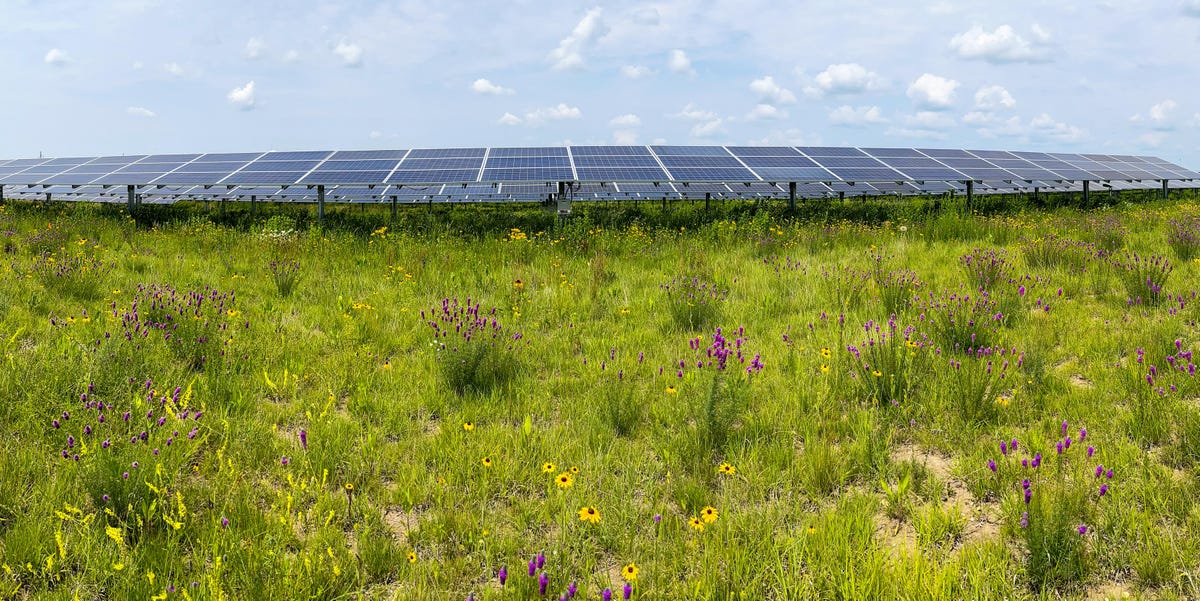Solar farms can grow more than just clean energy. They can be a cradle for a struggling but essential population: pollinators.
To avoid the worst effects of climate change, we need to stop burning the fossil fuels that are warming the planet and rapidly transition to carbon-free forms of energy like solar, wind and geothermal.
Meanwhile, climate change, along with habitat loss and pesticide use, is causing populations of pollinator insects to crash, imperiling plant life, including some plants humans use for food. Some estimates put the rate of decline at about 2% per year or 45% over the last 40 years.
There’s hope that efforts to solve one problem might help with the other: Recent research by scientists at the Argonne National Laboratory found that the conscious design of solar farms can help reverse the decline of pollinators. In Minnesota, two solar sites planted with native plants had their pollinator populations triple in just four years.
The results “tell us that it is achievable and you can see pretty quick results at the solar sites within four years or so,” said Lee Walston, an ecologist at Argonne National Laboratory and an author of the published research.

Watch this: The Ocean Cleanup’s System 03 Collects Plastic Pollution at Record Levels
08:53
The problem for pollinators
Insect pollinators (not all pollinators are insects) are on the decline for several reasons, including climate change. Pesticides used to kill pest insects can also kill beneficial ones. Land development that turns suitable habitats into roads, lawns, parking lots and buildings reduces the food and habitat available to insects. At the same time, invasive species outcompete native species and new diseases reduce populations further.
As the climate changes thanks largely to emissions from burning fossil fuels, plants some insects rely on may bloom too early or shift their range in search of cooler temperatures, leaving the insects without a food source and the plant without a pollinator.



